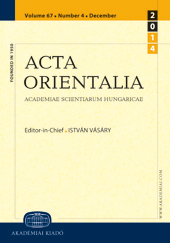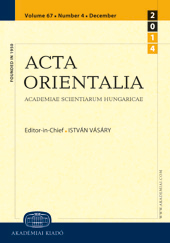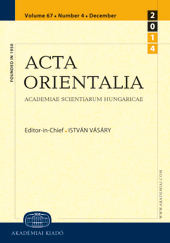
Dsakhchin (West-Mongolian) folksongs with Buddhist content
The Hungarian — Mongolian Joint Expedition aiming to investigate the languages and folk culture of West-and North-Mongolian ethnic groups started its research in 1991. Taking part in the activity of the expedition I had the opportunity to observe the renewed activity of the monks’ communities that became possible due to the political changes in 1990. In this article I will present a few folksongs with Buddhist content recorded from old Dsakhchin monks. This noteworthy new source material substantially contributes to the study of the Buddhist culture among the Mongols. A short description of genre analysis will be attached to each song.
More...

